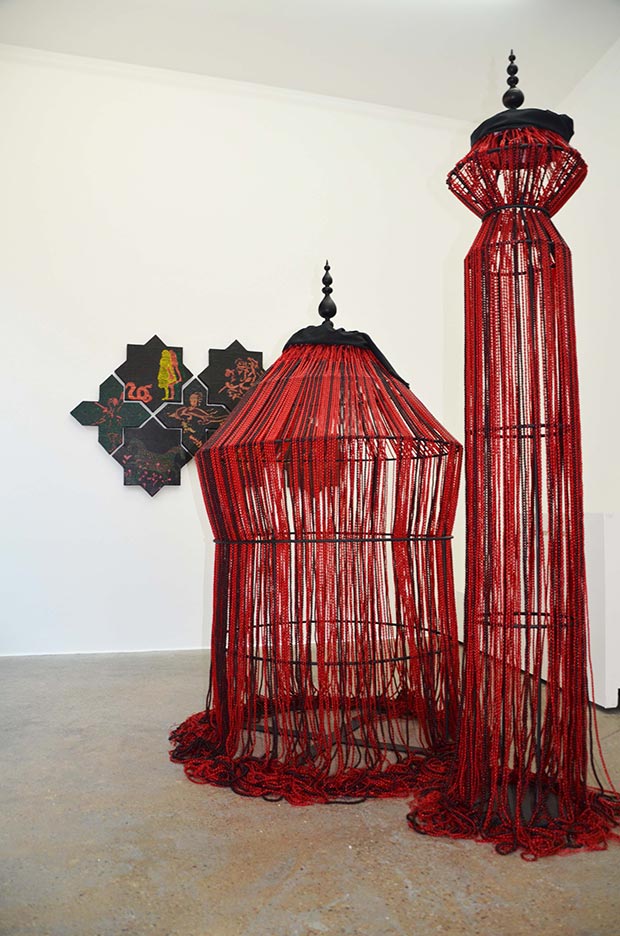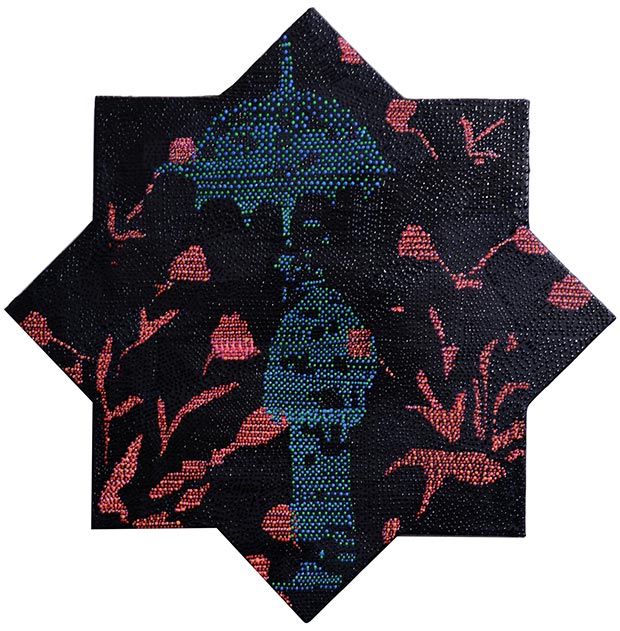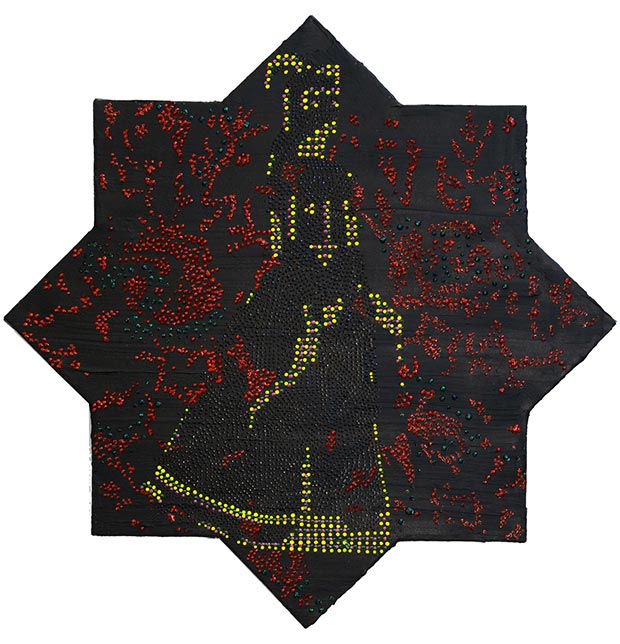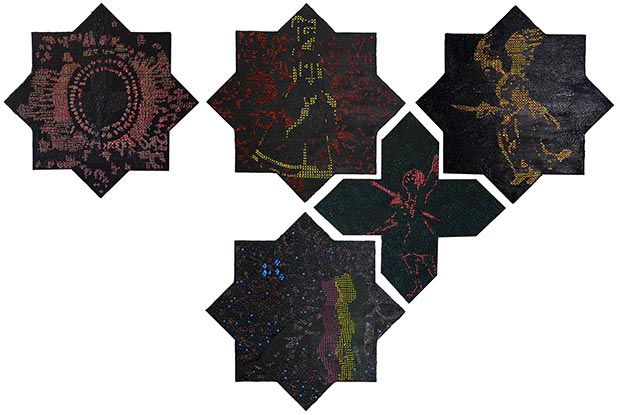
THE EXHIBITION 'HAREM OF THE HEART' BY SAMIRA HODAEI Persianesque Art that Empowers Women and Questions Reality
Sep 08, 2013 Exhibition

 Samira Hodaei, 'Harem of the Heart' Installation / Courtesy of AB Gallery and aquabitArt
Samira Hodaei, 'Harem of the Heart' Installation / Courtesy of AB Gallery and aquabitArt
Through her art, she has adapted cultural conflicts, divisions and complexities that have shaped her motherland. As a result, characters and developments that have been entwined into Iran’s history have motivated Samira to manifest herself as an Iranian, as an artist but fore mostly, as a woman. Her oeuvre, representing the role of women in contemporary and historical times, is a by all means a homage to all females whose suppressed feminine power is on the verge of exploding.
Growing up with artistic aspirations was not an easy task though. Once she started Art school, all she knew was that she wanted to draw and paint. ‘Nothing really major happened in the art scene back then mentions Samira, acknowledging by then that painting was thought more of as a hobby than ‘real’ work. And although it was a tough path to take, –as an independent, female artist– Samira persevered and got her family to accept her artistic and creative lifestyle.
 Samira Hodaei, 'Harem of the Heart' / Courtesy of AB Gallery and aquabitArt
Samira Hodaei, 'Harem of the Heart' / Courtesy of AB Gallery and aquabitArt
Next to the feminine theme in her oeuvre, her personal technique makes her work incredibly captivating. Indeed, characteristic of her methodology and style is the precise application of tiny dots on each canvas to bring it to life. They practically pop out from one into a second dimension, becoming incredibly catchy. Aware of the technical element in her paintings, she calls the dots ‘pixels’ and by doing so, Samira questions what is real and what is not. What goes on below the surface and what happens below the shell of our perception. She is also fascinated by the virtual world and by what that world means. According to her: "Pixels become like the DNA which shapes this virtual world and the virtual identities we all adopt and create of ourselves, yet we know that cyber world does not truly exist. Just the same way that I know my own identity may not be real."
 Samira Hodaei, 'Harem of the Heart' / Courtesy of AB Gallery and aquabitArt
Samira Hodaei, 'Harem of the Heart' / Courtesy of AB Gallery and aquabitArt
Even though Islamic origins are unmistakably reflected in Samira’s art, in general, her works are not much focused on religion. She rather expresses herself according to the experiences she has been through as a female artist. Moreover, she stands up for womanhood in what she does. Indeed, Samira states that she: "…is trying to be authentic and personal in her creative work." She attempts to tell her story, which could be the story of so many women out there as well.
Her works are of such autobiographical resonance they are highly controversial and challenge the female role in society. Women are indeed ever-present symbols in Samira’s entire oeuvre. For instance, she dares stepping into forbidden territory and critically comments on social attitudes in her country. "As women," mentions Samira, "our lives are shrouded in mystery to the unassuming eye. For centuries we have been told how to live and behave in order to be socially accepted. We are discouraged from thinking for ourselves, exploring unknown territory, or daring to step where no other has stepped before." The question of their role in her art is therefore, exceptionally daring and ubiquitous. Being a woman in Iran has never been easy. According to her, women are "never seen for who they truly are, asked what they truly desire or how they really feel."
 Samira Hodaei, 'Harem of the Heart' / Courtesy of AB Gallery and aquabitArt
Samira Hodaei, 'Harem of the Heart' / Courtesy of AB Gallery and aquabitArt
‘Harem of the Heart’ relates, to a certain extent, also to female representation. In this case, the three-dimensional interactive and ‘pixelated’ installation is expressed through symbolism in Islamic architecture. For Samira, expressing herself is to tell female audiences that in order to change the outside world, one should start changing from the inside.
After her bachelors at the Al Zahra University of Tehran, the young artist worked for six years as a studio assistant of Reza Derakshani, the internationally admired artist. She has also taken part in several group exhibitions in Tehran before becoming an artist in Residence at the AB Gallery, a programme of the Oryx Foundation in Switzerland. While Samira is still an emerging young artist, she has exhibited regularly at several international galleries in Switzerland, Qatar, Australia, Turkey, Germany and in the United Arab Emirates. Despite the art scene in Iran though, her work has not been exposed in her home country. She nevertheless represents an entire generation of Iranian artists and women in general. Currently, she lives and works in Teheran.
 Samira Hodaei, 'Harem of the Heart' / Courtesy of AB Gallery and aquabitArt
Samira Hodaei, 'Harem of the Heart' / Courtesy of AB Gallery and aquabitArt
The exhibition ‘Harem of the Heart’ takes place at Gallery Aquabit in Augustraße 35, Berlin – Mitte, September 6- 22, 2013.
For more information visit AB GALLERY or aquabitArt.
Laura Beltrán Villamizar (1988) is a freelance visual journalist, writer and editor living in The Netherlands. Specializing in art, culture and photography, Laura has written on an array of subjects including: climate change activism, contemporary art, and sustainable development. She has interviewed a dozen emerging artists, photographers and climate change activists and covered art fairs in Brussels, Amsterdam and Berlin. She was born in Bogotá, Colombia and lived in Argentina, Belgium and Germany. Her work has been published in Revolve Magazine and TIME Magazine. She currently lives and works in Amsterdam.
View more of her work.
Comments
Add a comment